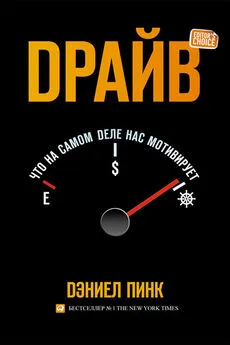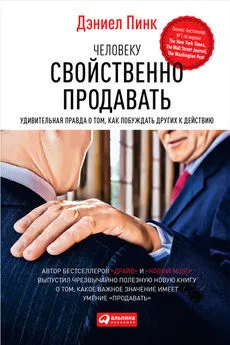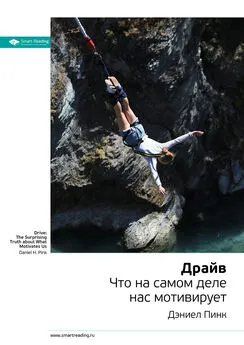Дэниель Пинк - Таймхакинг. Как наука помогает нам делать всё вовремя
- Название:Таймхакинг. Как наука помогает нам делать всё вовремя
- Автор:
- Жанр:
- Издательство:Литагент Альпина
- Год:2018
- Город:Москва
- ISBN:978-5-9614-1515-5
- Рейтинг:
- Избранное:Добавить в избранное
-
Отзывы:
-
Ваша оценка:
Дэниель Пинк - Таймхакинг. Как наука помогает нам делать всё вовремя краткое содержание
Таймхакинг. Как наука помогает нам делать всё вовремя - читать онлайн бесплатно ознакомительный отрывок
Интервал:
Закладка:
Данные, полученные некоторыми исследователями, говорят о том, что U-образная кривая стабильно наблюдается во всех странах; различия отмечаются лишь в «критической точке» (момент, когда благополучие достигает дна и вновь начинает расти). См.: Carol Graham and Julia Ruiz Pozuelo, “Happiness, Stress, and Age: How the U-Curve Varies Across People and Places,” Journal of Population Economics 30, no. 1 (2017): 225–264; Bert van Landeghem, “A Test for the Convexity of Human Well-Being over the Life Cycle: Longitudinal Evidence from a 20-Year Panel,” Journal of Economic Behavior & Organization 81, no. 2 (2012): 571–582.
202
David G. Blanchflower and Andrew J. Oswald, “Is Well-Being U-Shaped over the Life Cycle?” Social Science & Medicine 66, no. 8 (2008): 1733–1749.
203
Hannes Schwandt, “Unmet Aspirations as an Explanation for the Age U-Shape in Wellbeing,” Journal of Economic Behavior & Organization 122 (2016): 75–87.
204
Alexander Weiss et al., “Evidence for a Midlife Crisis in Great Apes Consistent with the U-Shape in Human Well-Being,” Proceedings of the National Academy of Sciences 109, no. 49 (2012): 19949–199452.
205
Maferima Touré-Tillery and Ayelet Fishbach, “The End Justifies the Means, but Only in the Middle,” Journal of Experimental Psychology: General 141, no. 3 (2012): 570–583.
206
Maferima Touré-Tillery and Ayelet Fishbach, “The End Justifies the Means, but Only in the Middle,” Journal of Experimental Psychology: General 141, no. 3 (2012): 570–583.
207
Niles Eldredge and Stephen Jay Gould, “Punctuated Equilibria: An Alternative to Phyletic Gradualism,” в Thomas Schopf, ed., Models in Paleobiology (San Francisco: Freeman, Cooper and Company, 1972), 82–115; Stephen Jay Gould and Niles Eldredge, “Punctuated Equilibria: The Tempo and Mode of Evolution Reconsidered,” Paleobiology 3, no. 2 (1977): 115–151.
208
Connie J. G. Gersick, “Time and Transition in Work Teams: Toward a New Model of Group Development,” Academy of Management Journal 31, no. 1 (1988): 9–41.
209
Connie J. G. Gersick, “Time and Transition in Work Teams: Toward a New Model of Group Development,” Academy of Management Journal 31, no. 1 (1988): 9–41.
210
Connie J. G. Gersick, “Marking Time: Predictable Transitions in Task Groups,” Academy of Management Journal 32, no. 2 (1989): 274–309.
211
Connie J. G. Gersick, “Pacing Strategic Change: The Case of a New Venture,” Academy of Management Journal 37, no. 1 (1994): 9–45.
212
Malcolm Moran, “Key Role for Coaches in Final,” New York Times , March 29, 1982; Jack Wilkinson, “UNC’s Crown a Worthy One,” New York Daily News, March 20, 1982; Curry Kirkpatrick, “Nothing Could Be Finer,” Sports Illustrated, April 5, 1982.
213
Curry Kirkpatrick, “Nothing Could Be Finer,” Sports Illustrated, April 5, 1982.
214
Malcolm Moran, “North Carolina Slips Past Georgetown by 63–62,” New York Times , March 30, 1982.
215
Jonah Berger and Devin Pope, “Can Losing Lead to Winning?” Management Science 57, no. 5 (2011): 817–827.
216
Jonah Berger and Devin Pope, “Can Losing Lead to Winning?” Management Science 57, no. 5 (2011): 817–827.
217
“Key Moments in Dean Smith’s Career,” Charlotte Observer , February 8, 2015.
218
Andrea C. Bonezzi, Miguel Brendl, and Matteo De Angelis, “Stuck in the Middle: The Psychophysics of Goal Pursuit,” Psychological Science 22, no. 5 (2011): 607–612.
219
См.: Colleen M. Seifert and Andrea L. Patalano, “Memory for Incomplete Tasks: A Re-Examination of the Zeigarnik Effect,” Proceedings of the Thirteenth Annual Conference of the Cognitive Science Society (Mahwah, NJ: Lawrence Erlbaum Associates, 1991), 114.
220
Brad Isaac, “Jerry Seinfeld’s Productivity Secret,” Lifehacker , July 24, 2007, 276–286.
221
Adam Grant, 2 Fail-Proof Techniques to Increase Your Productivity (Inc. Video). (Электронная версия: https://www.inc.com/adam-grant/productivity-playbook-failproof-productivity-techniques.html.)
222
Minjung Koo and Ayelet Fishbach, “Dynamics of Self-Regulation: How (Un) Accomplished Goal Actions Affect Motivation,” Journal of Personality and Social Psychology 94, no. 2 (2008): 183–195.
223
Cameron Ford and Diane M. Sullivan, “A Time for Everything: How the Timing of Novel Contributions Influences Project Team Outcomes,” Journal of Organizational Behavior 25, no. 2 (2004): 279–292.
224
J. Richard Hackman and Ruth Wageman, “A Theory of Team Coaching,” Academy of Management Review 30, no. 2 (2005): 269–287.
225
Hannes Schwandt, “Why So Many of Us Experience a Midlife Crisis,” Harvard Business Review, April 20, 2015. (Электронная версия: https://hbr.org/2015/04/why-so-many-of-us-experience-a-midlife-crisis.)
226
Minkyung Koo et al., “It’s a Wonderful Life: Mentally Subtracting Positive Events Improves People’s Affective States, Contrary to Their Affective Forecasts,” Journal of Personality and Social Psychology 95, no. 5 (2008): 1217–1224.
227
Juliana G. Breines and Serena Chen, “Self-Compassion Increases Self-Improvement Motivation,” Personality and Social Psychology Bulletin 38, no. 9 (2012): 1133–1143; Kristin D. Neff and Christopher K. Germer, “A Pilot Study and Randomized Controlled Trial of the Mindful Self-Compassion Program,” Journal of Clinical Psychology 69, no. 1 (2013): 28–44; Kristin D. Neff, “The Development and Validation of a Scale to Measure Self-Compassion,” Self and Identity 2, no. 3 2003): 223–250; Leah B. Shapira and Myriam Mongrain, “The Benefits of Self-Compassion and Optimism Exercises for Individuals Vulnerable to Depression,” Journal of Positive Psychology 5, no. 5 (2010): 377–389; Lisa M. Yarnell et al., “Meta-Analysis of Gender Differences in Self-Compassion,” Self and Identity 14, no. 5 (2015): 499–520.
228
Running USA, 2015 Running USA Annual Marathon Report , May 25, 2016 (Электронная версия: http://www.runningusa.org/marathon-report-2016); Ahotu Marathons, 2017–2018 Marathon Schedule . (Электронная версия: http://marathons.ahotu.com/calendar/marathon); Skechers Performance Los Angeles Marathon, Race History . (Электронная версия: http://www.lamarathon.com/press/race-history); Andrew Cave and Alex Miller, “Marathon Runners Sign Up in Record Numbers,” Telegraph, March 24, 2016.
229
Adam L. Alter and Hal E. Hershfield, “People Search for Meaning When They Approacha New Decade in Chronological Age,” Proceedings of the National Academy of Sciences 111, no. 48 (2014): 17066–17070. Критику некоторых данных и выводов Олтера и Хершфилда см.: Erik G. Larsen, “Commentary On: People Search for Meaning When They Approach a New Decade in Chronological Age,” Frontiers in Psychology 6 (2015): 792.
230
Adam L. Alter and Hal E. Hershfield, “People Search for Meaning When They Approach a New Decade in Chronological Age,” Proceedings of the National Academy of Sciences 111, no. 48 (2014): 17066–17070.
231
Jim Chairusmi, “When Super Bowl Scoring Peaks – or Timing Your Bathroom Break,” Wall Street Journal , February 4, 2017.
232
Clark L. Hull, “The Goal-Gradient Hypothesis and Maze Learning,” Psychological Review 39, no. 1 (1932): 25.
233
Clark L. Hull, “The Rat’s Speed-of-Locomotion Gradient in the Approach to Food,” Journal of Comparative Psychology 17, no. 3 (1934): 393.
234
Arthur B. Markman and C. Miguel Brendl, “The Influence of Goals on Value and Choice,” Psychology of Learning and Motivation 39 (2000): 97–128; Minjung Koo and Ayelet Fishbach, “Dynamics of Self-Regulation: How (Un)Accomplished Goal Actions Affect Motivation,” Journal of Personality and Social Psychology 94, no. 2 (2008): 183–195; Andrea Bonezzi, C. Miguel Brendl, and Matteo De Angelis, “Stuck in the Middle: The Psychophysics of Goal Pursuit,” Psychological Science 22, no. 5 (2011): 607–612; Szu-Chi Huang, Jordan Etkin, and Liyin Jin, “How Winning Changes Motivation in Multiphase Competitions,” Journal of Personality and Social Psychology 112, no. 6 (2017): 813–837; Kyle E. Conlon et al., “Eyes on the Prize: The Longitudinal Benefits of Goal Focus on Progress Toward a Weight Loss Goal,” Journal of Experimental Social Psychology 47, no. 4 (2011): 853–855.
235
Kristen Berman, “The Deadline Made Me Do It,” Scientific American, November 9, 2016. (Электронная версия: https://blogs.scientificamerican.com/mind-guest-blog/the-deadline-made-me-do-it/.)
236
John C. Birkimer et al., “Effects of Refutational Messages, Thought Provocation, and Decision Deadlines on Signing to Donate Organs,” Journal of Applied Social Psychology 24, no. 19 (1994): 1735–1761.
237
Suzanne B. Shu and Ayelet Gneezy, “Procrastination of Enjoyable Experiences,” Journal of Marketing Research 47, no. 5 (2010): 933–944.
238
Uri Gneezy, Ernan Haruvy, and Alvin E. Roth, “Bargaining Under a Deadline: Evidence from the Reverse Ultimatum Game,” Games and Economic Behavior 45, no. 2 (2003): 347–368; Don A. Moore, “The Unexpected Benefits of Final Deadlines in Negotiation,” Journal of Experimental Social Psychology 40, no. 1 (2004): 121–127.
239
Szu-Chi Huang and Ying Zhang, “All Roads Lead to Rome: The Impact of Multiple Attainment Means on Motivation,” Journal of Personality and Social Psychology 104, no. 2 (2013): 236–248.
240
Teresa M. Amabile, William DeJong, and Mark R. Lepper, “Effects of Externally Imposed Deadlines on Subsequent Intrinsic Motivation,” Journal of Personality and Social Psychology 34, no. 1 (1976): 92–98; Teresa M. Amabile, “The Social Psychology of Creativity: A Componential Conceptualization,” Journal of Personality and Social Psychology 45, no. 2 (1983): 357–377; Edward L. Deci and Richard M. Ryan, “The ‘What’ and ‘Why’ of Goal Pursuits: Human Needs and the Self-Determination of Behavior,” Psychological Inquiry 11, no. 4 (2000): 227–268.
Читать дальшеИнтервал:
Закладка:










